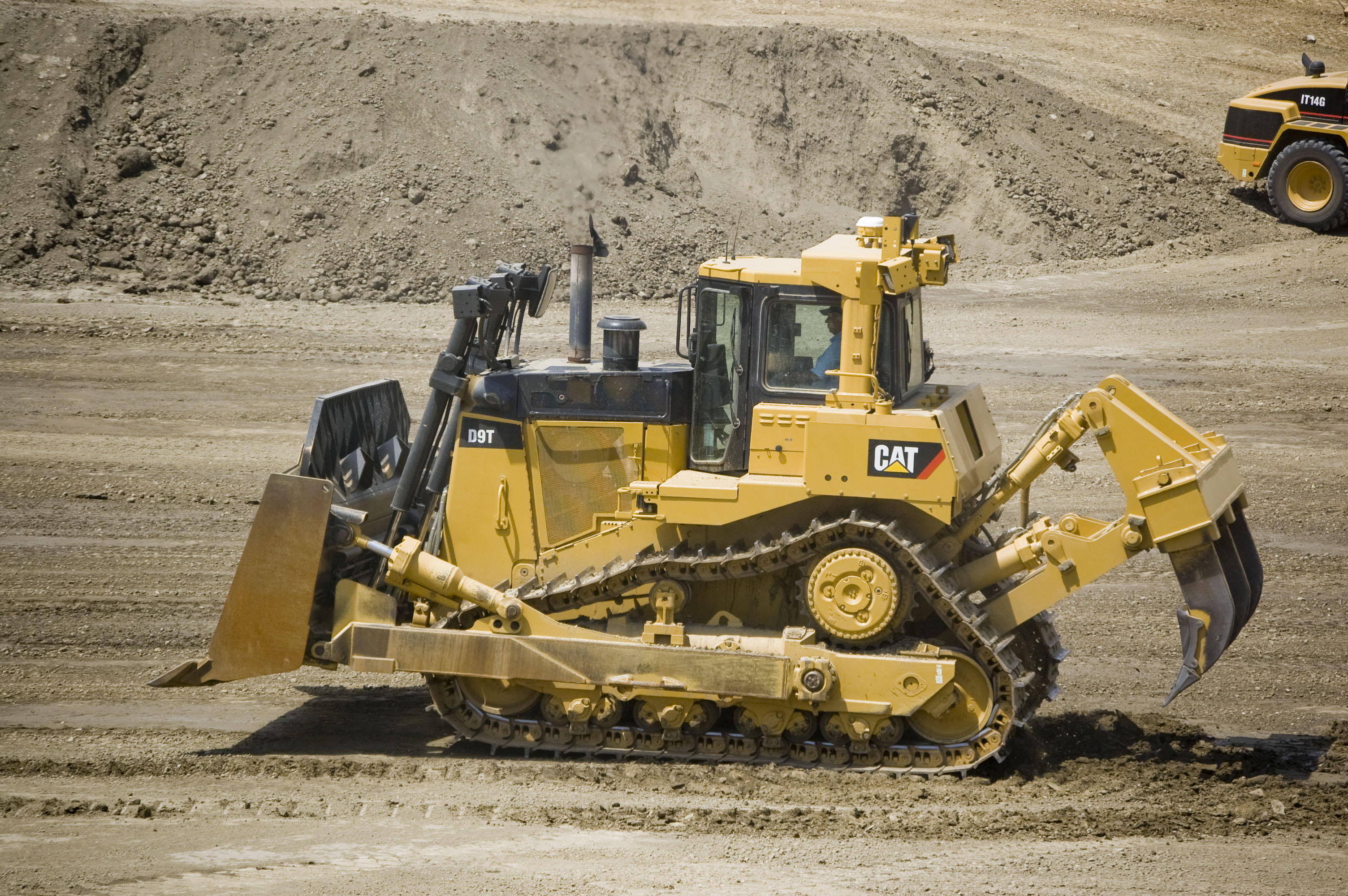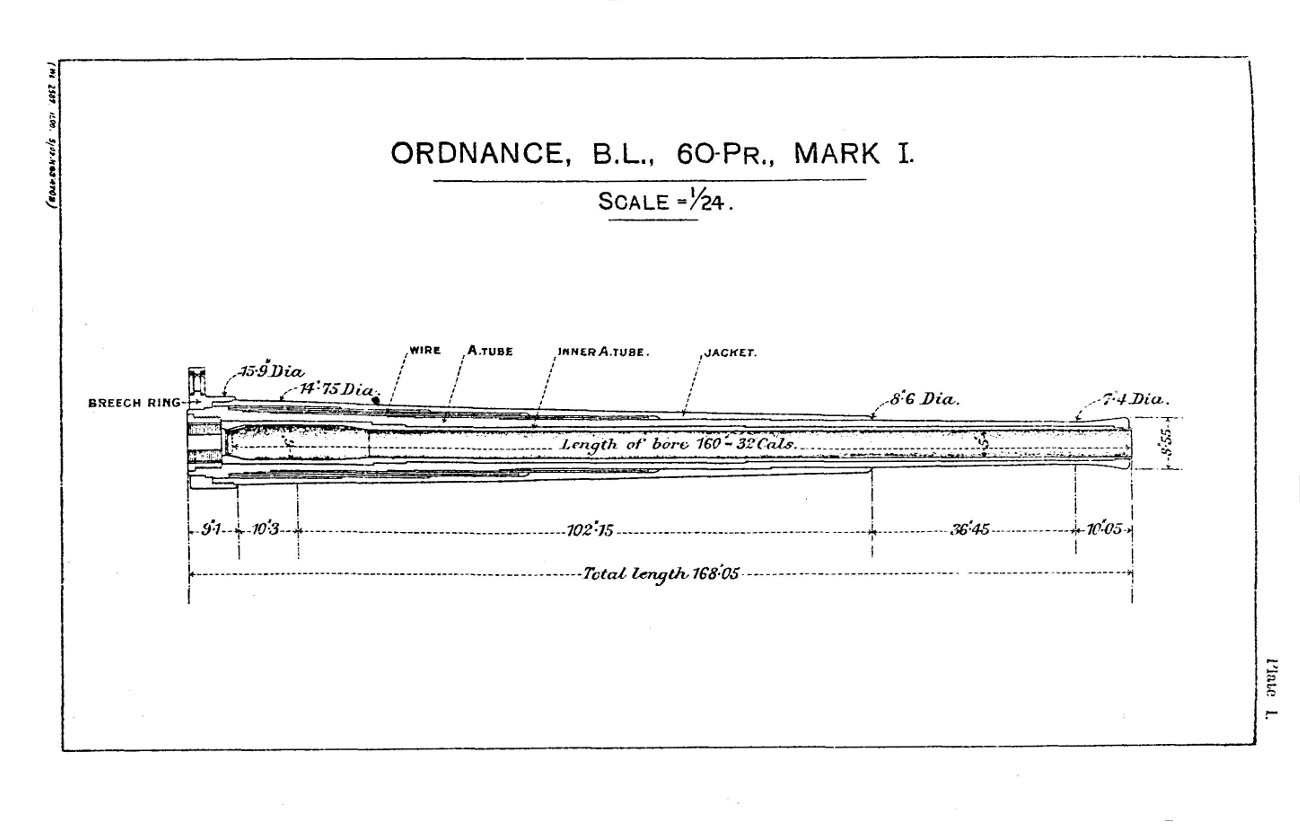|
Hydrospring
A hydrospring or hydro-spring is a spring damped by hydraulic fluid (typically oil) being driven through holes in a piston, as the piston moves in response to a force. The spring is often made of rubber. Inside a rubber hydrospring there are hydraulic viscous damping systems which damp movement in all three directions but require very few parts. Even the slack adjustment may be integrated into the element. Hydrosprings are used mainly as shock absorbers in applications such as damped suspension in railway bogies, bulldozer blade shock absorbers and as recoil absorbers for artillery. Rubber Hydrospring.png, A railway type rubber hydrospring Rubber Hydrospring Cross Section Down.png, A railway type rubber hydrospring in compressed state Rubber Hydrospring Cross Section Up.png, A railway type rubber hydrospring in relaxed state 60PounderRecoilMechanismDiagram.jpg, Hydro-spring recoil system of British WWI 60 pounder gun, with working explained See also * Dashpot A dashpot, also k ... [...More Info...] [...Related Items...] OR: [Wikipedia] [Google] [Baidu] |
Dashpot
A dashpot, also known as a damper, is a mechanical device that resists motion via viscous friction. The resulting force is proportional to the velocity, but acts in the opposite direction, slowing the motion and absorbing energy. It is commonly used in conjunction with a spring. The process and instrumentation diagram (P&ID) symbol for a dashpot is . Types The two most common types of dashpots are linear and rotary. Linear damper Linear dashpots — or linear dampers — are used to exert a force opposite to a translation movement. They are generally specified by stroke (amount of linear displacement) and damping coefficient (force per velocity). Rotary damper Similarly, rotary dampers will tend to oppose any torque applied to them, in an amount proportional to their rotational speed. Their damping coefficients will usually be specified by torque per angular velocity. One can distinguish two kinds of viscous rotary dashpots: * Vane dashpots which have a limited angular ran ... [...More Info...] [...Related Items...] OR: [Wikipedia] [Google] [Baidu] |
Spring (device)
A spring is an elastic object that stores mechanical energy. In everyday use the term often refers to coil springs, but there are many different spring designs. Modern springs are typically manufactured from spring steel, although some non-metallic objects like the bow are also springs. When a conventional spring, without stiffness variability features, is compressed or stretched from its resting position, it exerts an opposing force approximately proportional to its change in length (this approximation breaks down for larger deflections). The ''rate'' or ''spring constant'' of a spring is the change in the force it exerts, divided by the change in deflection of the spring. That is, it is the gradient of the force versus deflection curve. An extension or compression spring's rate is expressed in units of force divided by distance, for example or N/m or lbf/in. A torsion spring is a spring that works by twisting; when it is twisted about its axis by an angle, it produces a ... [...More Info...] [...Related Items...] OR: [Wikipedia] [Google] [Baidu] |
Hydraulic Fluid
A hydraulic fluid or hydraulic liquid is the medium by which power is transferred in hydraulic machinery. Common hydraulic fluids are based on mineral oil or water. Examples of equipment that might use hydraulic fluids are excavators and backhoes, hydraulic brakes, power steering systems, automatic transmissions, garbage trucks, aircraft flight control systems, lifts, and industrial machinery. Hydraulic systems like the ones mentioned above will work most efficiently if the hydraulic fluid used has zero compressibility. Functions and properties The primary function of a hydraulic fluid is to convey power. In use, however, there are other important functions of hydraulic fluid such as protection of the hydraulic machine components. The table below lists the major functions of a hydraulic fluid and the properties of a fluid that affect its ability to perform that function: Composition Base stock The original hydraulics fluid, dating back to the time of ancient Egypt ... [...More Info...] [...Related Items...] OR: [Wikipedia] [Google] [Baidu] |
Viscous Damping
In continuum mechanics, viscous damping is a formulation of the damping phenomena, in which the source of damping force is modeled as a function of the volume, shape, and velocity of an object traversing through a real fluid with viscosity. Typical examples of viscous damping in mechanical systems include: * Fluid films between surfaces * Fluid flow around a piston in a cylinder * Fluid flow through an orifice * Fluid flow within a journal bearing Viscous damping also refers to damping devices. Most often they damp motion by providing a force or torque opposing motion proportional to the velocity. This may be affected by fluid flow or motion of magnetic structures. The intended effect is to improve the damping ratio. * Shock absorbers in cars * Seismic retrofitting with viscous dampers{{Cite journal, last1=Pollini, first1=Nicolò, last2=Lavan, first2=Oren, last3=Amir, first3=Oded, date=2017, title=Minimum-cost optimization of nonlinear fluid viscous dampers and their supporting m ... [...More Info...] [...Related Items...] OR: [Wikipedia] [Google] [Baidu] |
Shock Absorbers
A shock absorber or damper is a mechanical or hydraulic device designed to absorb and damp shock impulses. It does this by converting the kinetic energy of the shock into another form of energy (typically heat) which is then dissipated. Most shock absorbers are a form of dashpot (a damper which resists motion via viscous friction). Description Pneumatic and hydraulic shock absorbers are used in conjunction with cushions and springs. An automobile shock absorber contains spring-loaded check valves and orifices to control the flow of oil through an internal piston (see below). One design consideration, when designing or choosing a shock absorber, is where that energy will go. In most shock absorbers, energy is converted to heat inside the viscous fluid. In hydraulic cylinders, the hydraulic fluid heats up, while in air cylinders, the hot air is usually exhausted to the atmosphere. In other types of shock absorbers, such as electromagnetic types, the dissipated energy can be s ... [...More Info...] [...Related Items...] OR: [Wikipedia] [Google] [Baidu] |
Bogie
A bogie ( ) (in some senses called a truck in North American English) is a chassis or framework that carries a wheelset, attached to a vehicle—a modular subassembly of wheels and axles. Bogies take various forms in various modes of transport. A bogie may remain normally attached (as on many railroad cars and semi-trailers) or be quickly detachable (as the dolly in a road train or in railway bogie exchange); it may contain a suspension within it (as most rail and trucking bogies do), or be solid and in turn be suspended (as most bogies of tracked vehicles are); it may be mounted on a swivel, as traditionally on a railway carriage or locomotive, additionally jointed and sprung (as in the landing gear of an airliner), or held in place by other means (centreless bogies). In Scotland, the term is used for a child’s (usually home-made) wooden cart. While ''bogie'' is the preferred spelling and first-listed variant in various dictionaries, bogey and bogy are also used. Rai ... [...More Info...] [...Related Items...] OR: [Wikipedia] [Google] [Baidu] |
Bulldozer
A bulldozer or dozer (also called a crawler) is a large, motorized machine equipped with a metal blade to the front for pushing material: soil, sand, snow, rubble, or rock during construction work. It travels most commonly on continuous tracks, though specialized models riding on large off-road tires are also produced. Its most popular accessory is a ripper, a large hook-like device mounted singly or in multiples in the rear to loosen dense materials. Bulldozers are used heavily in large and small scale construction, road building, minings and quarrying, on farms, in heavy industry factories, and in military applications in both peace and wartime. The word "bulldozer" refers only to a motorized unit fitted with a blade designed for pushing. The word is sometimes used inaccurately for other heavy equipment such as a front-end loader designed for carrying rather than pushing material. Description Typically, bulldozers are large and powerful tracked heavy equipment. T ... [...More Info...] [...Related Items...] OR: [Wikipedia] [Google] [Baidu] |
Hydro-spring
This article explains terms used for the British Armed Forces' ordnance (i.e.: weapons) and also ammunition. The terms may have slightly different meanings in the military of other countries. BD Between decks: applies to a naval gun mounting in which part of the rotating mass is below the deck, and part of it is above the deck. This allows for a lower profile of turret, meaning that turrets need not be superfiring (i.e. they can be mounted on the same deck and not obstruct each other at high angles of elevation.) BL The term BL, in its general sense, stood for breech loading, and contrasted with muzzle loading. The shell was loaded via the breech (i.e. the gunner's end of the barrel, which opened) followed by the propellant charge, and the breech mechanism was closed to seal the chamber. Breech loading, in its formal British ordnance sense, served to identify the gun as the type of rifled breechloading gun for which the powder charge was loaded in a silk or cloth bag and the br ... [...More Info...] [...Related Items...] OR: [Wikipedia] [Google] [Baidu] |
60 Pounder
The Ordnance BL 60-pounder was a British 5 inch (127 mm) heavy field gun designed in 1903–05 to provide a new capability that had been partially met by the interim QF 4.7 inch Gun. It was designed for both horse draft and mechanical traction and served throughout the First World War in the main theatres. It remained in service with British and Commonwealth forces in the inter-war period and in frontline service with British and South African batteries until 1942 being superseded by the BL 4.5 inch Medium Gun. History Origin and Use The effective use of modern heavy field guns by the Boers during the Second Boer War (1899–1902) was a revelation to armies in Europe including the British. They were impressed by their mobility and range. Britain used some heavy guns in that war under ad hoc arrangements. After the capture of Pretoria in 1900 Lord Roberts, the commander-in-chief in South Africa (and an artillery officer), had stated the requirements of a heavy fiel ... [...More Info...] [...Related Items...] OR: [Wikipedia] [Google] [Baidu] |




